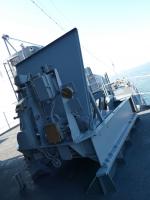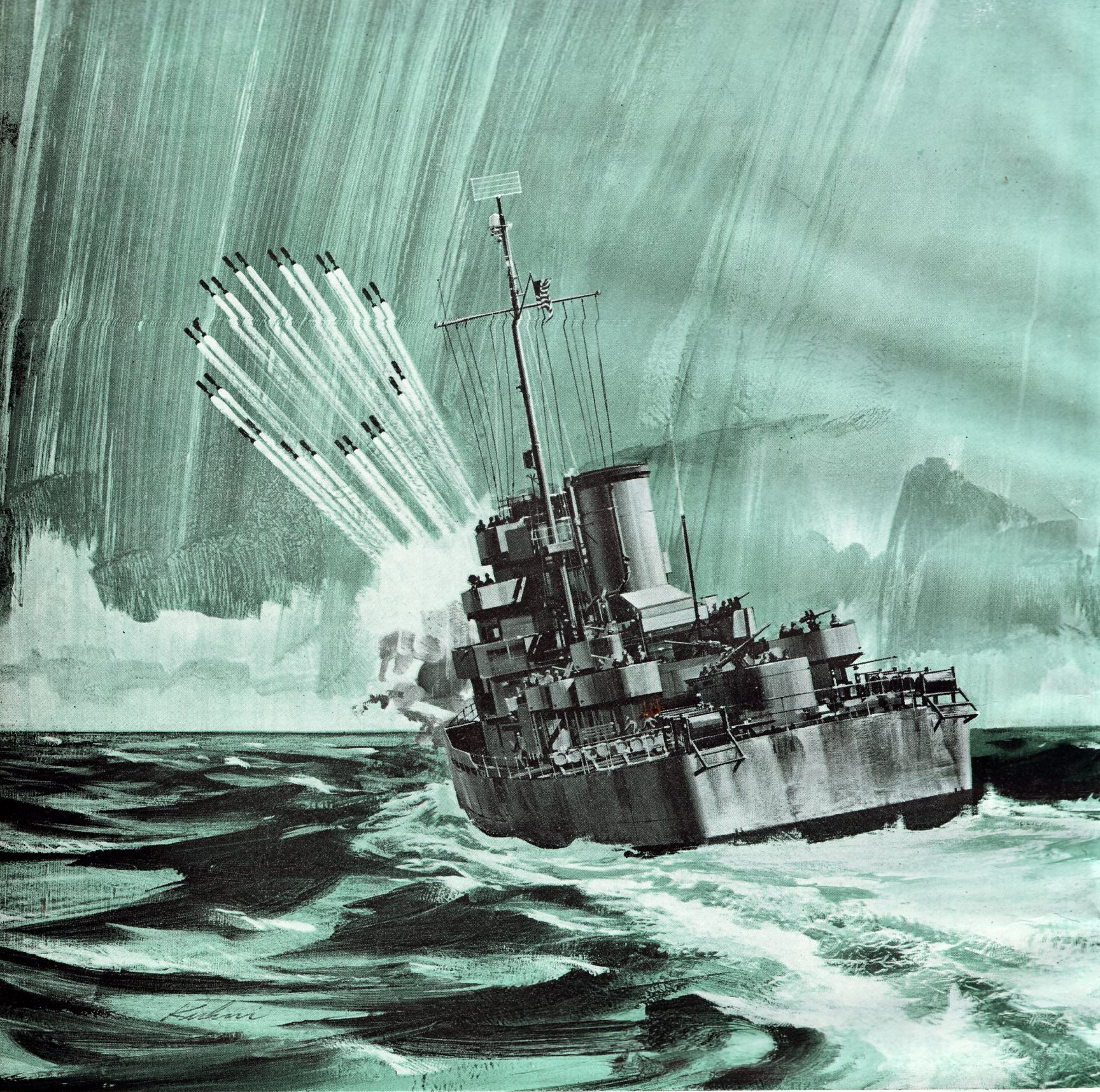|
The MK10 hedgehog was developed by the British to overcome the primary deficiencies of the depth charge attack. WWII sonar only scanned ahead of the ship and thus depth charges were dropped blindly as there was no sonar contact once the ship passed over the submarine. In addition, the noise and turbulence created by the depth charge attack disrupted any existing sonar contact for up to half an hour. Located near the bow, the hedgehog had the advantage of firing ahead of the ship while the submarine remained in sonar contact.
The hedgehog was a crude, 24-spigot mortar firing about 270 yds or 250 meters ahead of the attacking ship. It fired a circular salvo in the general area of the submarine, each missile containing 30 lbs of TNT or 35 lbs of Torpex. The missiles were contact fuzed, thus only detonating when hitting a submerged object, such as a submarine.
It is not known of any submarine surviving a hedgehog hit. Hedgehog was only fitted to destroyer escorts and British-built frigates during the war. Various models of hedgehog projectors fired either a circular or oval pattern.
Ahead Thrown Missiles: The MK10 projector, known as the hedgehog, launches 24 - 7.2 inch missiles with contact fuzes.
Usual Range: 250 - 280 Yards/ 230-260 Meters
Rate of Fire: 1 Salvo per 3 minutes
Missile: The projector charge has a head of 7.2 inches in diameter, with a tail, fins and shroud. This missile is not a rocket; the propelling charge is an impulse charge of smokeless powder. The fuze arms as the missle sinks and is designed to function only upon impact. The explosive charge consists of 30 pounds of TNT, or 35 pounds of Torpex.
Projector: Projector MK10 projects a pattern of 24 charges ahead of the attacking vessel. The missiles are loaded on cylindrical bars called spigots, six are attached to each cradle with four cradles in the projector. These cradles are interconnected and can be swung about a fore-and-aft axis by means of a roll-correction gear assembly mounted on a gun-train indicator pedestal. This movement is limited, but allows enough movement to compensate for roll of the ship and to aid in leading the target. The spigots are so positioned that when fired the charges describe an elliptical pattern of about 140 by 120 feet, at an average range of about 200 yards. The charges are fired electrically by a ripple switch, firing missiles in pairs, with the highest trajectories being fired first so that all 24 hit the water at about the same time.
As stated above, the major deficiency of the combined SONAR/depth charge attack was the so-called blind times. The first being the time it took a depth charge to reach the depth at which they were set to explode, which increased with the depth of the contact. The second blind time was that at a certain distance, the target would be too close to be spotted on SONAR. A good submariner could use these blind times to avoid the attack.
Watch the hedgehog in action aboard the USS PARLE DE708 !
Your browser does not support the video tag.
|






.jpg)
.jpg)
.jpg)





